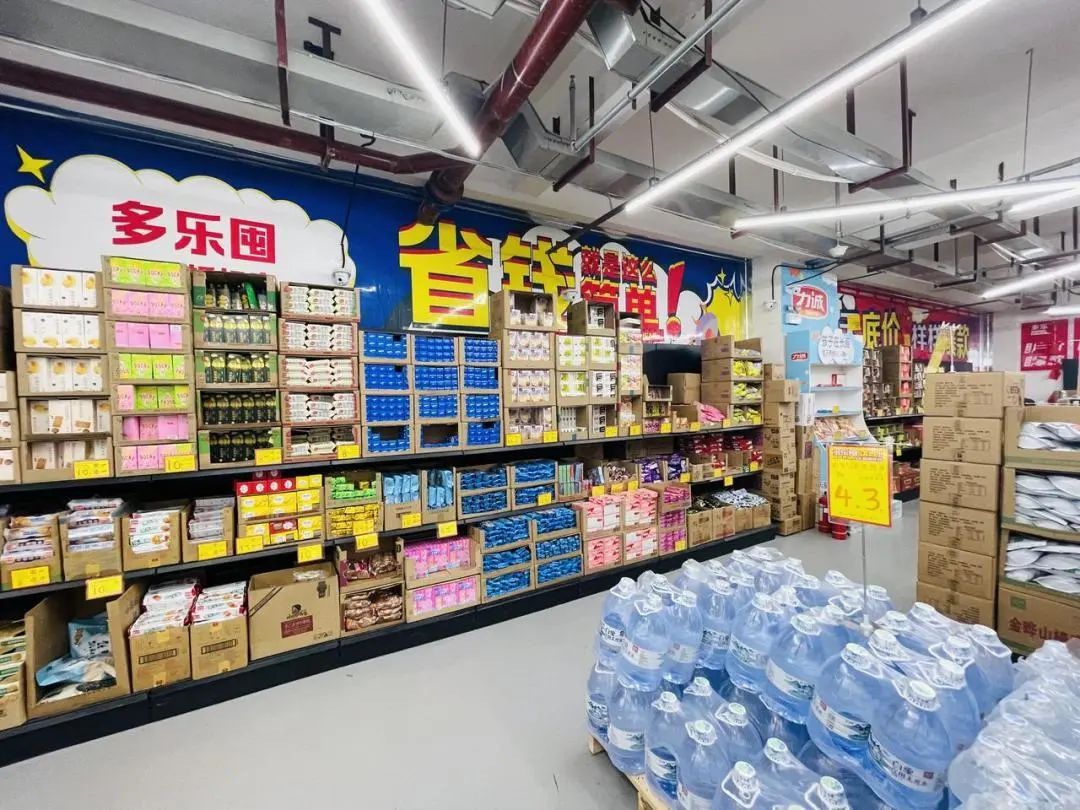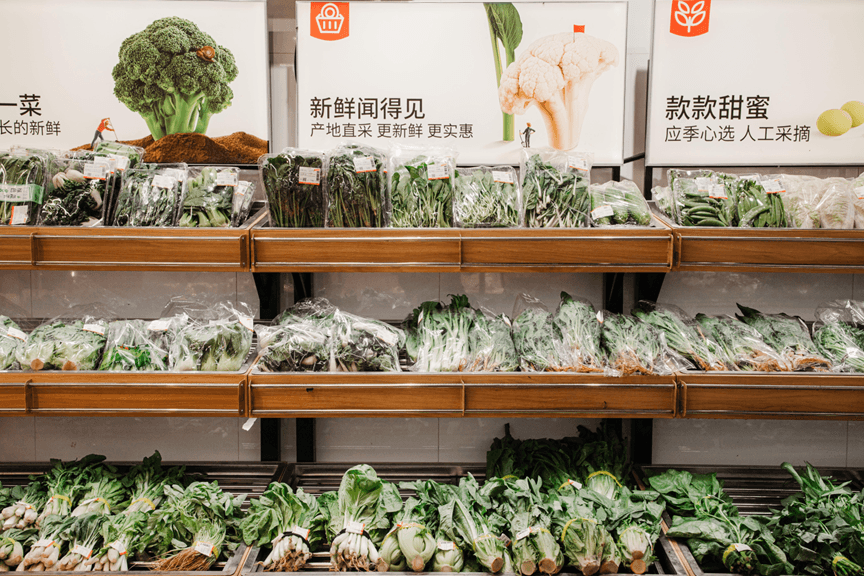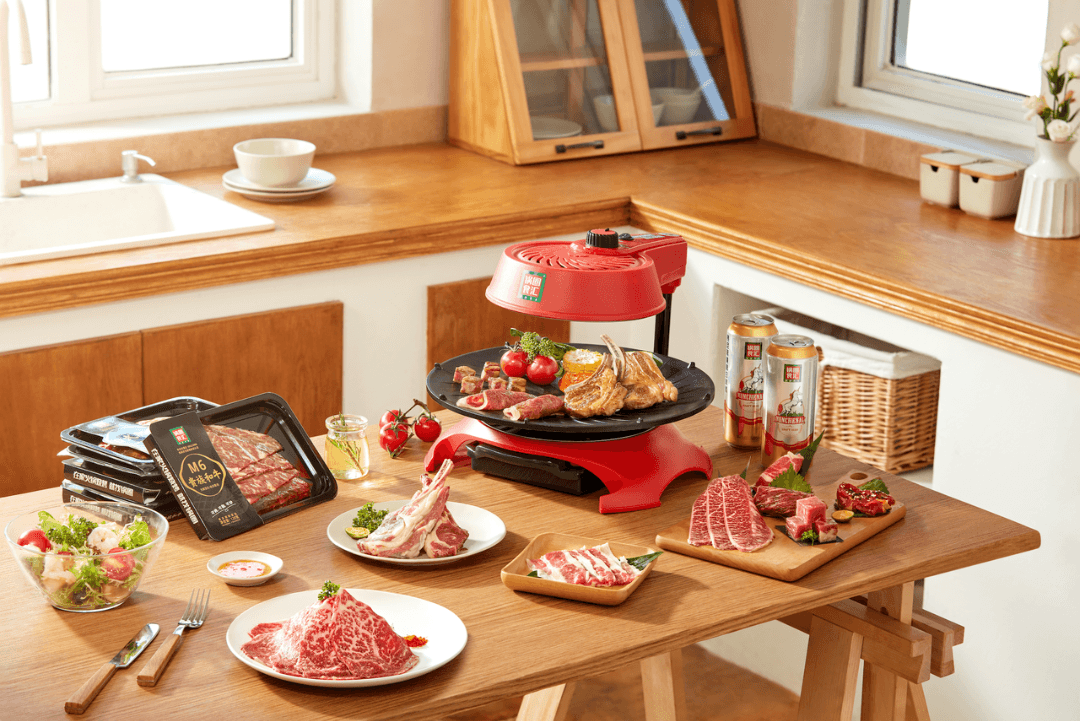The departure of large-scale supermarkets and the rise of community stores mark a new force in offline retail. With nearly 20,000 GenBridge stores scattered across the country, spanning from north to south, a new breed of category killers in the community retail sector continues to emerge, encompassing fresh produce, frozen goods, snacks, prepared foods, alcoholic beverages, and other innovative categories.
As the number of stores surpasses the ten-thousand mark, GenBridge believes that chain formats rooted in community growth are the core components of China’s “new generation of national chains,” establishing themselves as the primary retail channels for the new generation.
Not long ago, the “Ten Thousand Community Chain Stores ” founders gathered for a thematic roundtable at the GenBridge Partner Summit in Shenzhen. Discussions centered around “the path to establishing a chain of ten thousand community stores” and “how to succeed with differentiation strategies.”
GenBridge’s investment strategy in the community chain covers various “killer” food categories in supermarkets: focusing on fresh produce with Qiandama, frozen goods with Guoquan, a collection of snacks with Snack Is Busy, convenient stores for freshly prepared foods with New Joy Mart, and discount stores for ambient temperature foods with Duoletun.
Geographically, GenBridge’s portfolios cover markets with different characteristics and levels across China: along the central axis from Zhengzhou to Changsha to Guangzhou, representing typical north-south differences and the characteristics of high and low-tier cities in China.
In terms of stages, they cover different phases of store expansion: Guoquan has surpassed ten thousand stores, Snack Is Busy, Qiandama, and New Joy Mart, are moving from thousands to tens of thousands of stores, and Duoletun is growing from dozens to hundreds of stores.
Regarding store types, they cover various store sizes: there are large and medium-sized stores with areas of 400 square meters and 200 square meters, respectively, as well as small stores with areas ranging from 60 to 100 square meters. This diverse combination is rich within the community store format.
The extensive coverage provides us with a comprehensive perspective. When GenBridge’s portfolio entrepreneurs come together, their exchanges and collisions largely represent the forefront insights of China’s new generation of national community retail chains. The following is the essence of their roundtable discussion.

The path to establishing a chain of ten thousand community stores
Weihua Feng, CEO of Qiandama
Qiandama is a community fresh produce format, positioning itself as providing fresh ingredients using the “100% sold daily” model. Now there are over 3,000 stores in more than 30 cities nationwide. Our growth has been fueled by the dividend of China’s community retail, seizing the opportunity to address the convenient purchase of fresh produce for community consumers.
In recent years, rather than emphasizing the number of new store openings, Qiandama has prioritized ensuring each store’s excellence and strengthening each regional presence, aiming to enhance the overall brand strength, which we believe holds greater value. Our founding team and partners are also contemplating and collaboratively creating strategies for the next development phase.

In the core region of Southern China, Qiandama has reached a level of maturity but remains unsaturated in cities like Guangzhou and Shenzhen, with approximately 550 stores in each city, averaging one Qiandama store for every 30,000 residents. The store density in Hong Kong is even higher, averaging one store for every 20,000 residents. Calculating based on these proportions, we have categorized cities in China into different levels according to their size and density, with varying purchasing habits and store opening densities in each level.

As consumer habits continue to evolve, corporate capabilities upgrade as well, we aim to closely follow consumer demands, enhance our capabilities, and expand our stores to more communities in the future.
Haolei An, Co-founder and Vice President of Guoquan
Guoquan is a kitchen food chain with outlets located at the entrances of communities, currently boasting a nationwide presence with over 10,000 stores. We provide a home-cooking solution that saves people time and enables those who are not adept at cooking to prepare delicious meals. Guoquan’s mission is to offer premium global ingredients, hoping that people in remote villages can enjoy delectable and convenient dishes at an affordable price, such as the finest hairtail fish and barramundi.

The founding team of Guoquan envisions a future where all consumers think of Guoquan when deciding to eat at home. Currently, there are 120,000 neighborhood committees in China. Wherever there is a neighborhood committee, there is a community, and our aspiration is for Guoquan to be present wherever there is a community. As China’s infrastructure continues to improve and the demand from consumers in lower-tier cities becomes more apparent, Guoquan still sees significant growth potential domestically. Leveraging increasingly efficient supply chains, we strive to maintain consistent product quality while continually reducing prices.
Minyi Wu, Founder of New Joy Mart
Before GenBridge’s investment, the New Joy Mart Convenience Store operated under a weak franchise model. However, in 2019, we began experimenting with new store formats, and by 2020, we had shifted to a strong franchise model. Currently, our stores are primarily located in Hunan, gradually expanding into Jiangxi, and focusing on Central China. We have the highest single-store sales among domestic convenience stores, primarily catering to customers in second-tier and below cities. Our product categories revolve around fast-moving consumer goods, including both cold and hot items, and beverages such as coffee.

Before venturing into entrepreneurship with New Joy Mart, I was a doctor. Breaking down our products into “molecular formulas,” essentially comprising water, proteins, carbohydrates, caffeine, alcohol, etc., each category in China represents a multi-billion scale. We strive to achieve “molecular differentiation,” generating profits. For instance, our focus on selling ice includes refrigerated fresh beer and fresh milk.
During our cross-regional expansion, New Joy Mart capitalized on its strengths in the face of competition. For example, with products like fresh milk and ice cream, there isn’t an absolute dominant brand in consumers’ minds. It primarily depends on factors like freshness, cost-effectiveness, or interesting new brands. By amplifying our category strengths, we reduced dependence on long-tail categories.

Convenience store is a high-ceiling sector with vast market space, but it’s also a relatively traditional format. In the past, convenience stores went through a phase of investing a lot but hardly making any profits. Therefore, our store openings are based on the efficiency and profitability of store density and business models. Currently, there’s room for our single brand to have 3,000-4,000 stores in the Hunan convenience store market alone. In the entire Central China region, including Hunan, Jiangxi, and Hubei, there’s a market space of 6,000-10,000 stores.
The Southern China market is one we eagerly anticipate. It might be an area 5-10 times the size of the Central China market. For example, the total number of convenience stores in Guangdong is seven times that of Hunan and twenty times that of Jiangxi. Even a single city like Dongguan may be larger than Changsha. Therefore, while we continue to deepen our presence in Hunan and radiate into Jiangxi, we also aspire to expand across regions into Southern China in the future.
Junliang Chen, Founder of Duoletun
Duoletun was established in 2021 in Zhengzhou as a community-oriented hard-discount supermarket, with the core philosophy of saving money for customers. This focus is evident in every aspect of the company, from internal operations to customer interactions. Currently, all Duoletun stores are company-owned, with the plan to reach approximately 70 stores by the end of this year, still in the early stages of development. The primary product categories revolve around daily household needs, offering essential food items like grains, cooking oil, frozen goods, and dairy at affordable prices. The SKU count is around 700.

Our main store format is community supermarkets ranging from 300 to 500 square meters. Over the past two years, as we have strengthened trust with customers, same-store growth has doubled. Customers are now visiting Duoletun approximately twice a week. With a stable per-customer transaction, the penetration rate is gradually increasing, making it feasible to open a store with a population base of around 50,000. Considering Zhengzhou’s population of around 12 million, we estimate the potential to open over 200 stores in our home base.

Looking at hard-discount stores abroad, especially BIM in Turkey, a country with a population of approximately 80 million, has opened nearly 4,000 stores. With an average of one store for every 20,000 people, a high level of penetration. Their experience is worth considering, and in the future, we aim to deepen our value proposition through adjustments in product structure and increased consumer trust.
Succeed through differentiation strategy
Weihua Feng, CEO of Qiandama
During the pandemic, the essential demand for fresh foods benefited community fresh markets. However, post-pandemic, the entire industry faces increased competitive pressure. Firstly, consumers may be diverted, either towards online purchases or a return to traditional farmers’ markets. Another change is the entry of numerous new players in the sector, intensifying competition.
In response, Qiandama has made operational strategy adjustments, including precise management of the entire pricing structure and activity strategies. However, these are short-term “tactical” strategies; the core of Qiandama’s approach remains the creation of products with substantial market appeal, allowing consumers to purchase higher-quality products at more competitive prices, ultimately leading to brand recognition.
Firstly, a focus on better quality without increasing prices, or even lowering them. This necessitates optimization throughout the entire supply chain. This year, we have strengthened our collective procurement capabilities, sourcing some major products directly from the origin to enhance quality and competitiveness.

Secondly, seizing opportunities with seasonal major products and dynamically adjusting the product category structure. While Qiandama traditionally emphasized fresh produce, pork, and vegetables, fruits were not initially a core category. However, this year, we successfully capitalized on the watermelon category, significantly increasing its overall sales share.
Thirdly, exploring opportunities for new products. Apart from our flagship pork category, there is considerable potential in beef, lamb, poultry, and other meat categories. We are actively seeking breakthroughs in these areas.

Finally, we have made numerous adjustments in refined operations. While the “daily replenishment model” allowed Qiandama to enjoy natural growth in the past, increased competition has led us to enhance our operational capabilities. Retail is all about details, and the profit margin in fresh food, after deducting costs, is very low. It requires meticulous management at every step to sustain store development. We are investing in training franchisees on the brand’s business model and have done significant research and improvement in our own brand, leaving ample room for further optimization and enhancement.
Haolei An, Co-founder and Vice President of Guoquan
The pandemic has accustomed people to eating at home, where one feels warm and cozy. Consequently, the frequency of purchasing from Guoquan for at-home dining has increased, with sustained growth in data from core cities.
In the future, with the further development of mobile internet, we predict that the boundaries between online and offline consumption will merge. Purely online and offline brands will become increasingly rare. The next stage of competition will focus on digital capabilities and higher efficiency in reaching users. For instance, food delivery has become a crucial sales source for Guoquan stores.
Guoquan has also undergone significant reforms in its products. While initially focused on cost-effectiveness, the future goal is to achieve a balance between quality and price. The aim is to enable consumers to spend less money while enjoying better-quality, more satisfying meals, recognizing the self-branded products from Guoquan and having more industry-leading popular items. Simultaneously, in private domain operations, Guoquan has developed methodologies for higher digital efficiency, making it more convenient for customers to purchase, simplifying store operations, and ensuring that the backend factories better understand consumer behavior at the front end.
The next decade still presents a great opportunity in the consumer market. As the era progresses, it will leave behind various competitive openings. Guoquan plans to continue iterating its products, brand and enhancing its organization over the next 5-10 years, adapting to the development of the next era in both the supply chain and product research and development.

Minyi Wu, Founder of New Joy Mart
There are three main changes on the consumer side. Firstly, there is a shift in customer traffic. Secondly, an increased demand for the freshness of products. Thirdly, a heightened sensitivity to prices.
During the pandemic, there was minimal foot traffic in offline convenience stores as customers stayed at home. During this period, New Joy Mart synchronized the entire online and offline data, conducted an overall review, and underwent digital upgrades. Currently, the online-to-offline (O2O) ratio is approximately 15% to 20%. Particularly in third-tier cities and below, New Joy Mart’s takeaway sales percentage is among the top in the market after entering. As we move towards lower-tier cities, where the supply is weaker and there is less competition from major players, it provides us with more opportunities.

The second aspect involves the freshness and pricing of products. For instance, there has been a noticeable increase in the demand for fresh milk, as well as similar trends for fresh beer and freshly ground coffee. Customers are seeking fresher products but are unwilling to spend more. This requires us to enhance our operational efficiency. We have explored various methods to offer fresh milk at the same price or even a lower price than regular milk. This not only allows us to capitalize on the growth in demand for fresh milk but also facilitates the conversion of regular milk customers to fresh milk customers.
Furthermore, New Joy Mart’s approach includes providing freshly ground coffee in almost all of its stores, and customized plans for fresh beer. We believe that the pricing for fresh beer should be similar to or even lower than brands like Qingdao and Budweiser. This approach translates to greater customer purchases.

Junliang Chen, Founder of Duoletun
Duoletun is considering product strategies based on changes in consumer demand:
Firstly, determining the price point for customers. Since the relaxation of pandemic restrictions, the increase in per-customer transactions has indeed surpassed expectations. When contemplating the reasons behind this, we go back to a fundamental perspective, examining giants with five to six decades of global development, such as ALDI and LIDL. Each acceleration phase typically occurs when there are significant changes in the economic and social environment. The immediate perception is related to everyone’s financial situation, reflecting a decrease in disposable income. We conducted research that indicated approximately 60-70% of consumers are experiencing a decrease in disposable income.
In response to this situation, Duoletun has adhered to a “saving” strategy. In the first half of this year, customer traffic at Duoletun increased by nearly 30%. The reason is clear – we lowered prices for nearly 400 SKUs, passing on the benefits of reduced procurement costs due to increased scale to customers, while maintaining a stable gross profit margin.
Our pricing logic is to be slightly cheaper than Pinduoduo, driving us to optimize our own cost-efficiency. Hard discounts are designed to help customers find even more affordable products.

Secondly, determining what to sell to customers. Our overall strategy focused on high-frequency consumption items, emphasizing major product categories. However, there have been changes in this approach. Firstly, the product category structure is evolving, influenced by shifts in consumer behavior during the pandemic, with frozen foods experiencing remarkable growth. Consequently, we have dedicated efforts to these categories this year. Secondly, we aim to provide choices that are both lower in price and maintain quality, aligning with consumer demand. We carefully compared the CPI and optimized the fruit category by increasing the proportion of fruits, delivering quality to consumers while reducing prices by half.
Victor Zhang, Co-founder and Partner of GenBridge
Thank all the entrepreneurs for their insightful sharing. The pragmatic attitude of entrepreneurs in the GenBridge Ten-thousand Chain Stores fully tells the truth—no matter how great a retail format is, it is ultimately built on very practical principles in action. The real challenge lies in the day-to-day improvement, transforming technology, experience, team, and resources into a form of long-term compounding. Of course, this is also the beauty of the retail industry. China’s consumer industry is entering a phase of vertical supply chain reshaping driven by retail channels. Looking forward to seeing, after 10 years, community stores established by GenBridge portfolios covering every neighborhood in China, providing consumers with high-value products and the convenience of daily life.


